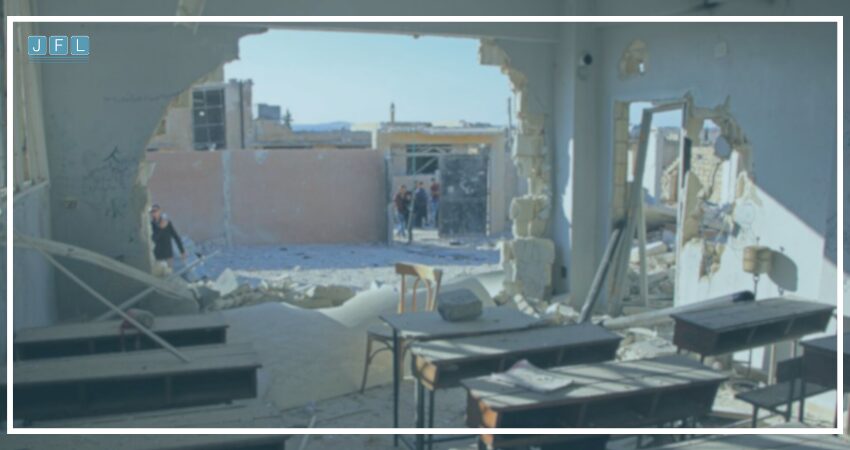In countries experiencing wars and conflicts, such as Syria, education serves not only as a means to acquire knowledge, but also as a crucial tool for individuals to confront difficulties and develop skills necessary for advancing societies in distress. In such turbulent environments, education becomes a means to resist poverty, ignorance, and extremism. It also allows new generations to learn the values of tolerance and peace, laying the groundwork for a future distinct from the current dark reality.
Moreover, education plays a vital role in providing psychosocial support to children and young people affected by the traumas of war. Without education, entire generations are at risk of being recruited into armed conflicts or falling into extreme poverty, which perpetuates the cycle of violence and instability.
In war-torn countries, the educational system—encompassing teachers, administrators, and supervisors—forms the backbone of the educational process. These educators take on roles far beyond their traditional responsibilities, becoming community leaders and mentors who help restore hope to students and create a learning environment that fosters a sense of security and belonging. However, these educators face significant challenges, ranging from a lack of resources to security threats, making their work both more complex and crucial.
Supporting education in conflict zones is not just a humanitarian necessity, but also an investment in long-term peace and stability. This requires the development of adaptable educational strategies that consider the complex challenges in these areas, with a focus on providing safe learning environments, supporting educators, and ensuring that education is accessible to all children, regardless of their circumstances.
In Syria, particularly in Deir Ezzor, the outbreak of war turned the area into a battleground for various conflicting forces, including the Syrian government, the armed opposition, and ISIS/Daesh. The region has faced significant destruction of its infrastructure, mass displacement, and a severe decline in basic services such as education and healthcare. Despite being liberated from ISIS in 2017, Deir Ezzor continues to suffer from security and economic instability, severely impacting the lives of its residents and the region’s recovery and, thus, the future of its children and youth. It is estimated that more than 2.1 million Syrian children of primary and secondary school age are out of school.
The conflict in Syria has destroyed much of the educational infrastructure, affecting millions of children who have found themselves out of schools. The challenges are immense, as the educational process is distorted by displacement and the difficult living conditions faced by students and their families. The deteriorating security conditions in the region also hinder efforts to provide quality education, as they have disrupted the educational process and affected the ability of schools to provide their services.
1.75 million students are out of school, while 1.35 million are at risk of dropping out.
300.000 teachers escaped and did not return to their jobs, causing a severe shortage of education staff.
One-third of schools are damaged, destroyed, or inaccessible.
Given the significant challenges facing the education sector in Syria, particularly in the Deir Ezzor countryside, this paper was developed based on a series of focus group discussions. These discussion sessions brought together teachers, civil society organizations, experts, decision-makers, and others from areas in the Deir Ezzor countryside (Al-Busayrah, Sa’wa, and Hajin) that are under the control of the Syrian Democratic Forces. The discussions addressed several critical issues and essential needs within the education sector. This initiative aims to offer comprehensive and actionable solutions to improve the quality of education in these regions and enhance support for teachers.
Read more: Improving the Quality of Education and Supporting Teachers













